Serving 279 students in grades 4-8, Baltimore Collegiate School For Boys ranks in the bottom 50% of all schools in Maryland for overall test scores (math proficiency is bottom 50%, and reading proficiency is bottom 50%).
The percentage of students achieving proficiency in math is 3% (which is lower than the Maryland state average of 25%). The percentage of students achieving proficiency in reading/language arts is 8% (which is lower than the Maryland state average of 45%).
The student:teacher ratio of 16:1 is higher than the Maryland state level of 14:1.
Quick Stats (2025)
- School Type: Charter School
- Grades: 4-8
- Enrollment: 279 students
- Student:Teacher Ratio: 16:1
- Overall Testing Rank: Bottom 50% in MD
- Math Proficiency: 3% (Btm 50%)
- Reading Proficiency: 8% (Btm 50%)
- Science Proficiency: 6-9% (Btm 50%)
- Source: National Center for Education Statistics (NCES), MD Dept. of Education
Top Rankings
Baltimore Collegiate School For Boys ranks among the top 20% of public schools in Maryland for:
Category
Attribute
Percent Eligible For Free Lunch
Community Size
School Overview
Baltimore Collegiate School For Boys's student population of 279 students has declined by 41% over five school years.
The teacher population of 17 teachers has declined by 19% over five school years.
School Type
Grades Offered
Grades 4-8
(offers virtual instruction)
(offers virtual instruction)
Total Students
279 students
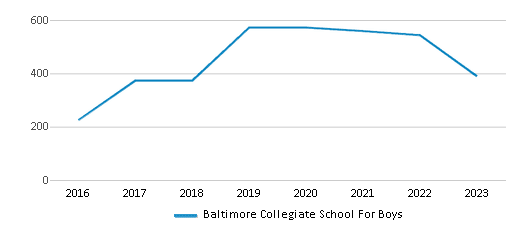
Gender %
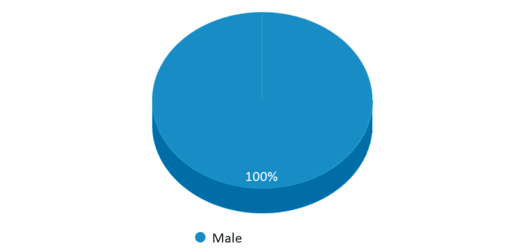
Total Classroom Teachers
17 teachers
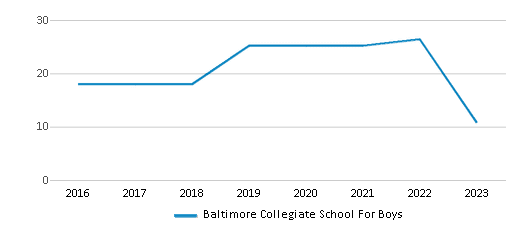
Students by Grade

School Rankings
Baltimore Collegiate School For Boys ranks within the bottom 50% of all 1,347 schools in Maryland (based off of combined math and reading proficiency testing data).
The diversity score of Baltimore Collegiate School For Boys is 0.04, which is less than the diversity score at state average of 0.74. The school's diversity has stayed relatively flat over five school years.
Overall Testing Rank
#1331 out of 1347 schools
(Bottom 50%)
(Bottom 50%)
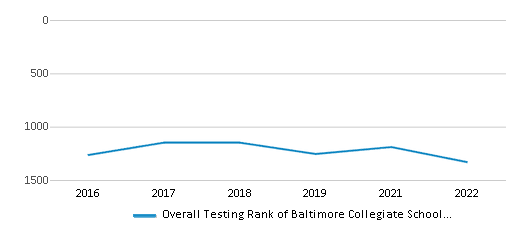
Math Test Scores (% Proficient)
3%
25%
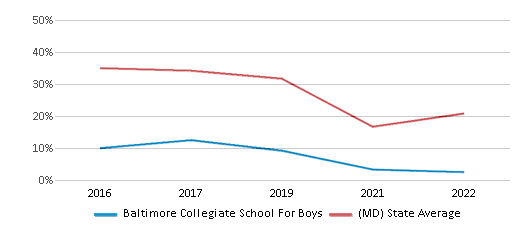
Reading/Language Arts Test Scores (% Proficient)
8%
45%
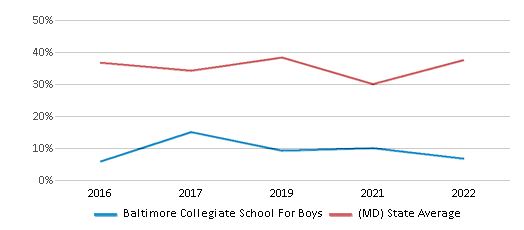
Science Test Scores (% Proficient)
6-9%
36%
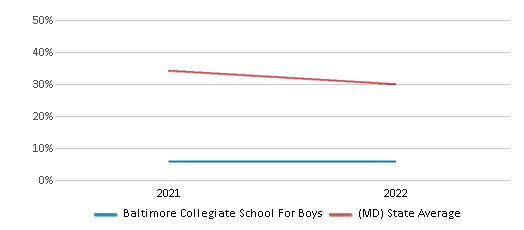
Student : Teacher Ratio
16:1
14:1
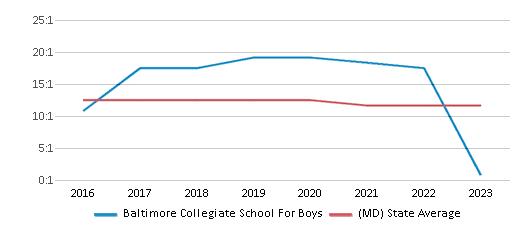
American Indian
n/a
n/a
Asian
n/a
7%
Hispanic
1%
23%
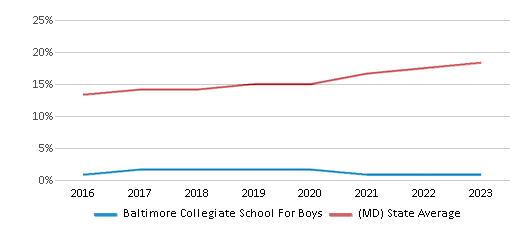
Black
98%
33%
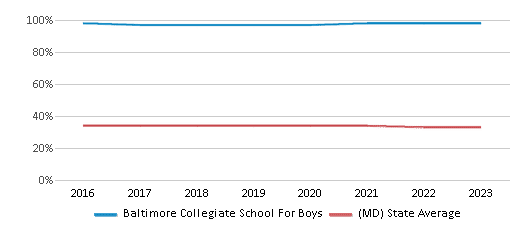
White
n/a
32%
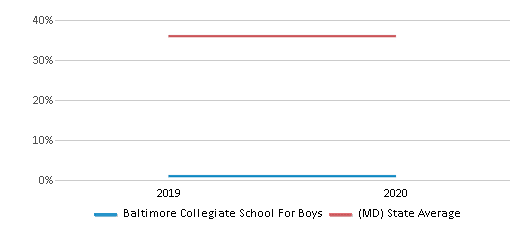
Hawaiian
n/a
n/a
Two or more races
1%
5%
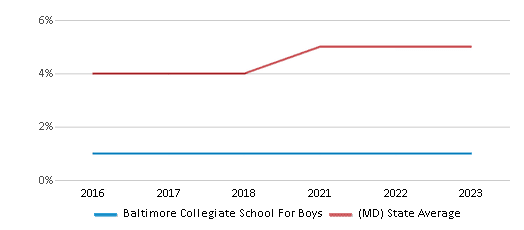
All Ethnic Groups
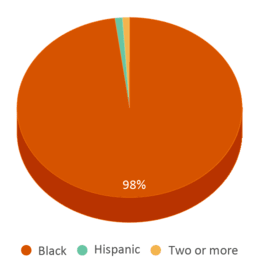
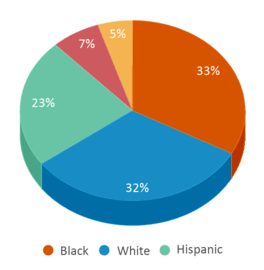
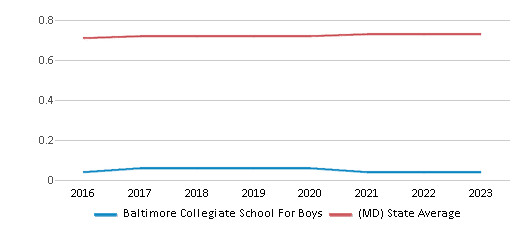
Participates in the National School Lunch Program (NSLP)
Yes
Eligible for Free Lunch
78%
44%
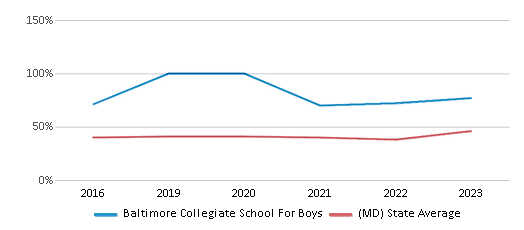
School Statewide Testing
School District Name
Sports
Total Sports Offered
9 sports
Sports
Baseball, Basketball, Cross Country, Football, Lacrosse, Soccer, Swimming, Track, Wrestling
Extracurriculars
Total ExtracurricularsTotal Extra-curric.
3 extracurriculars
ExtracurricularsExtra-curric.
Club or Organization:
Chess Club, Robotics
Recreational Athletic Programs:
Introductory Swimming
Chess Club, Robotics
Recreational Athletic Programs:
Introductory Swimming
Source: National Center for Education Statistics (NCES), MD Dept. of Education
School Notes
- Baltimore Collegiate School for Boysprovides the finest liberal arts education possible to Baltimore`s next generation of young men, ensuring that they will become responsible citizens trained to lead and serve our community, our nation, and our world.
- Baltimore Collegiate School for Boys is the first charter school in the city to serve exclusively boys with a continuous academic program from grades 4 through 8. Baltimore Collegiate is inspired, developed and organized by the Board of Trustees of The Five Smooth Stones Foundation, Inc., a non-profit educational institution committed to transforming a generation of boys and young men in Baltimore City with world class educational opportunities. The Foundation has been authorized by Baltimore City Public Schools to operate a school.
Profile last updated: 02/09/2025
Frequently Asked Questions
What is Baltimore Collegiate School For Boys's ranking?
Baltimore Collegiate School For Boys is ranked #1331 out of 1,347 schools, which ranks it among the bottom 50% of public schools in Maryland.
What percent of students have achieved state testing proficiency in math and reading?
3% of students have achieved math proficiency (compared to the 25% MD state average), while 8% of students have achieved reading proficiency (compared to the 45% MD state average).
How many students attend Baltimore Collegiate School For Boys?
279 students attend Baltimore Collegiate School For Boys.
What is the racial composition of the student body?
98% of Baltimore Collegiate School For Boys students are Black, 1% of students are Hispanic, and 1% of students are Two or more races.
What is the student:teacher ratio of Baltimore Collegiate School For Boys?
Baltimore Collegiate School For Boys has a student ration of 16:1, which is higher than the Maryland state average of 14:1.
What grades does Baltimore Collegiate School For Boys offer ?
Baltimore Collegiate School For Boys offers enrollment in grades 4-8 (offers virtual instruction).
What school district is Baltimore Collegiate School For Boys part of?
Baltimore Collegiate School For Boys is part of Baltimore City School District.
In what neighborhood is Baltimore Collegiate School For Boys located?
Baltimore Collegiate School For Boys is located in the Coldstream Homestead Montebello neighborhood of Baltimore, MD. There are 3 other public schools located in Coldstream Homestead Montebello.
School Reviews
Review Baltimore Collegiate School For Boys. Reviews should be a few sentences in length. Please include any comments on:
- Quality of academic programs, teachers, and facilities
- Availability of music, art, sports and other extracurricular activities
Recent Articles

What Is A Charter School?
Explore the world of charter schools in this comprehensive guide. Learn about their history, how they operate, and the pros and cons of this educational innovation. Discover key facts about charter schools, including admission policies, demographics, and funding, as well as what to look for when considering a charter school for your child.

10 Reasons Why High School Sports Benefit Students
Discover the 10 compelling reasons why high school sports are beneficial for students. This comprehensive article explores how athletics enhance academic performance, foster personal growth, and develop crucial life skills. From improved fitness and time management to leadership development and community representation, learn why participating in high school sports can be a game-changer for students' overall success and well-being.

February 05, 2025
Understanding the U.S. Department of Education: Structure, Impact, and EvolutionWe explore how the Department of Education shapes American education, from its cabinet-level leadership to its impact on millions of students, written for general audiences seeking clarity on this vital institution.









